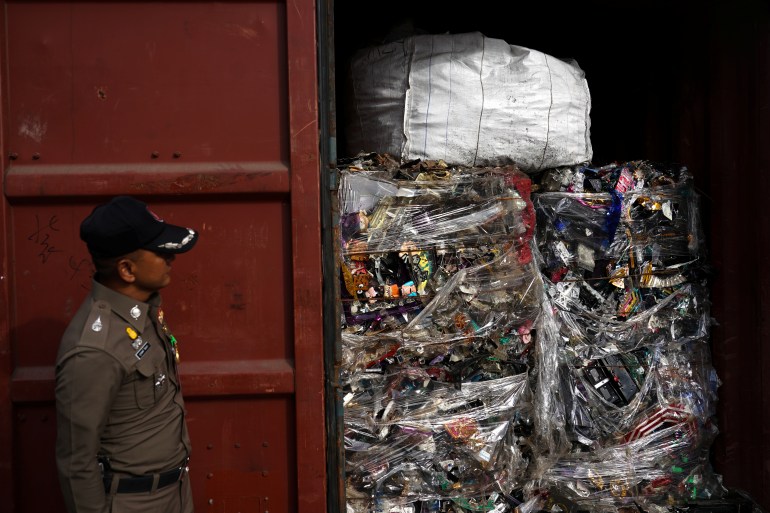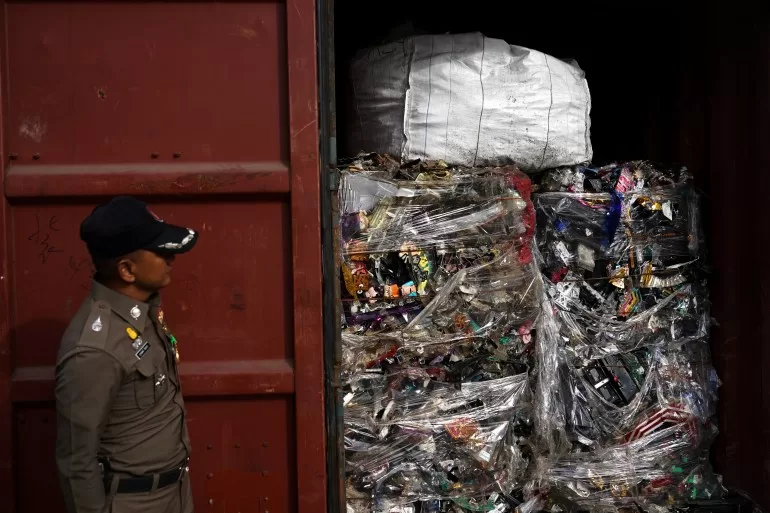The UN says about 62 million tonnes of e-waste was generated in 2022.
The agencies were referring to “e-waste,” which is defined as discarded devices with a plug or battery, including mobile phones, electronic toys, TVs, microwave ovens, e-cigarettes, laptop computers and solar panels.
It does not include waste from electronic vehicles, which fall into a separate category.
In a report released on Wednesday, the UN’s International Telecommunications Union and research arm UNITAR said some 62 million tonnes of “e-waste” was generated in 2022, enough to fill tractor-trailers that could be lined up bumper to bumper around the globe. It’s on track to reach 82 million tonnes by 2030.
The report said metals – including copper, gold, and iron – made up half of the 62 million tonnes, worth a total of some $91bn.
These raw metals and critical metals like cobalt are vital for making batteries and have strategic value.
Plastics accounted for 17 million tonnes, and substances like composite materials and glass made up the remaining 14 million tonnes.

The UN says only 22 percent of the e-waste mass was properly collected and recycled in 2022.
The agencies said it is expected to fall to 20 percent by the end of the decade because of the “staggering growth” of such waste due to higher consumption, limited repair options, shorter product life cycles, the growing “electronification” of society, and inadequate e-waste management infrastructure.
They said some of the discarded electronic devices contained hazardous elements like mercury, as well as rare earth metals coveted by tech industry manufacturers.
Currently, only 1 percent of the demand for the 17 minerals that make up the rare metals is met through recycling.
The report said on average, every person on earth generates roughly 7.8 kilogrammes (17 pounds 3 ounces) of e-waste each year.
But that varies considerably across the globe, with about half of all e-waste being generated in Asia, where few countries have laws on e-waste or collection targets.
Recycling and collection rates top 40 percent in Europe, where per-capita waste generation is highest: nearly 18kg (39 pounds).
In Africa, which generates the least of any of the five big global regions, recycling and collection rates hover at about 1 percent, the report said.
